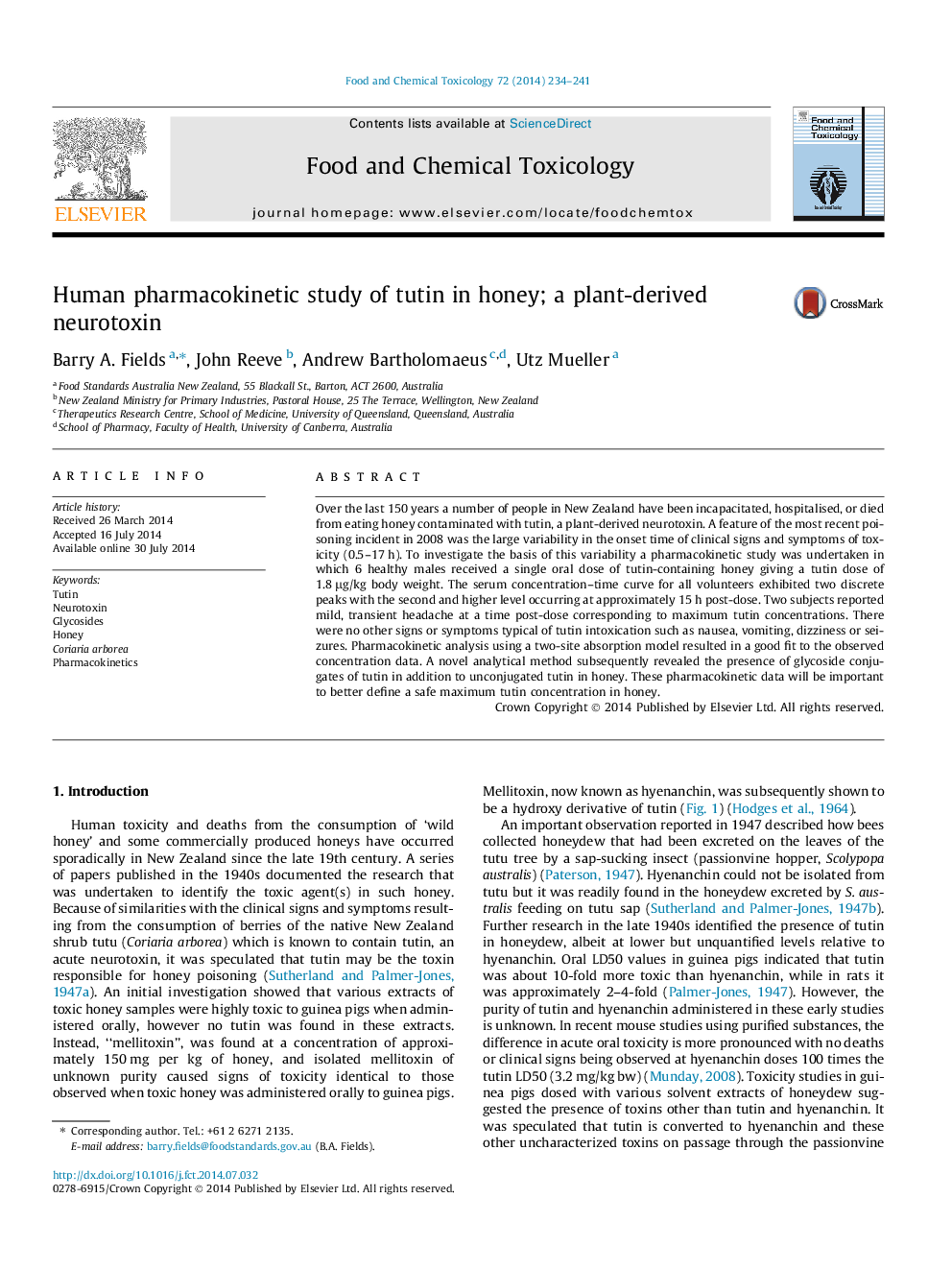| Article ID | Journal | Published Year | Pages | File Type |
|---|---|---|---|---|
| 2585010 | Food and Chemical Toxicology | 2014 | 8 Pages |
•Six volunteers ingested honey naturally contaminated with the neurotoxin tutin.•A peak in tutin serum concentration occurred one hour after honey ingestion.•A larger, prolonged second peak was observed at a mean of 15 h after ingestion.•Large quantities of tutin glycosides were subsequently identified in honey.•In vivo release of tutin from glycosides explains the delayed second peak.
Over the last 150 years a number of people in New Zealand have been incapacitated, hospitalised, or died from eating honey contaminated with tutin, a plant-derived neurotoxin. A feature of the most recent poisoning incident in 2008 was the large variability in the onset time of clinical signs and symptoms of toxicity (0.5–17 h). To investigate the basis of this variability a pharmacokinetic study was undertaken in which 6 healthy males received a single oral dose of tutin-containing honey giving a tutin dose of 1.8 μg/kg body weight. The serum concentration–time curve for all volunteers exhibited two discrete peaks with the second and higher level occurring at approximately 15 h post-dose. Two subjects reported mild, transient headache at a time post-dose corresponding to maximum tutin concentrations. There were no other signs or symptoms typical of tutin intoxication such as nausea, vomiting, dizziness or seizures. Pharmacokinetic analysis using a two-site absorption model resulted in a good fit to the observed concentration data. A novel analytical method subsequently revealed the presence of glycoside conjugates of tutin in addition to unconjugated tutin in honey. These pharmacokinetic data will be important to better define a safe maximum tutin concentration in honey.
